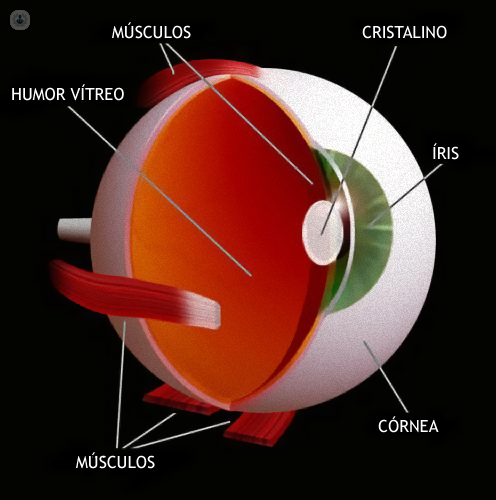

What is a corneal transplant?
A corneal transplant, also called keratoplasty, is the total or partial replacement of the cornea, which is the transparent external lens located in the front of the eye, which is responsible for our vision.
This is one of the most common transplants, in which the cornea of a recently deceased donor is used, whose eyes have been tested to ensure that they are suitable. Local anaesthetic is applied.

Why is it performed?
A corneal transplant is performed if you have severe vision problems due to a corneal dysfunction:
- Opacities in the cornea , the most common pathology treated, which can either be present from birth or acquired. In many cases, the opacity of the cornea is caused by Fuchs’ dystrophy.
- Thinning of the cornea , usually caused by keratoconus, resulting in vision problems.
- Scarring of the cornea , due to serious injury or infection.
What does a corneal transplant involve?
Corneal transplant surgery is a minimally-invasive operation. It requires only a local anaesthetic, so you remain awake throughout.
The procedure consists of removing the central part of the cornea and inserting a donor cornea of the same size, using stitches to secure it in place. The ophthalmologist may use a femtosecond laser during the procedure.
There are three types of transplant, which depend on the amount of cornea being transplanted:
- Anterior keratoplasty, when the two anterior layers of the cornea are transplanted
- Endothelial keratoplasty, when only the inner layer is transplanted
- Penetrating keratoplasty, when the entire cornea is transplanted.
Preparing for a corneal transplant:
The main guidelines to follow prior to surgery are:
- Tell the specialist about any medication you are taking or if you are undergoing any other medical treatment.
- You may need to reduce blood-thinning drugs before the procedure.
- You will need to limit your food and drink intake from midnight onwards, prior to the day of surgery. Depending on the case, you may be able to drink some liquids (water, black coffee, tea, etc.) up to two hours before surgery.
- You must not drink alcohol 24 hours before or after the procedure.
- You must not apply creams, lotions or make-up around the eyes or to your face on the day of surgery.
- You will need someone to take you home after the surgery.
Post-operative care:
You can return home the same day of the surgery. You must wear an eye patch for four days afterwards and the ophthalmologist will prescribe drops to help the eye heal and to prevent transplant rejection and possible infection.
The stitches on the cornea will be removed by the ophthalmologist during a follow-up visit. The first healing phase will take about three weeks. During this time, you must not touch your eye, you must protect it during sleep and when showering and you must wear sunglasses during the day. After having this surgery, you will usually need to wear glasses or contact lenses.
Alternatives to this treatment:
A corneal transplant is a major operation and is only performed when there is no other way to restore the vision.
There are some cases in which a corneal transplant is not required, but your cornea may need to be repositioned to cover or minimise the lesion or opaque region that is obstructing your vision.
